How to Hear Better in Noisy Places
- Do you sometimes have trouble following conversations in noisy places?
- Does it seem that restaurants play background music louder than they used to?
- Do you struggle to hear the speaker at the end of the dining or conference room table?
These situations are typically symptoms of mild-to-moderate hearing loss. While hearing aids may be the best solution for those who have a really hard time hearing in almost every situation, they may not be right for you.
Can Technology Help?
For those who have mild-to-moderate hearing loss the Wear & Hear line of personal hearing devices provide a completely personalized hearing experience. Important ambient sounds, peoples’ voices, and sounds from all audio sources are amplified, enhanced and adapted to suit individual hearing preferences.
Advanced technology based on input from four separate microphones integrated into a neck loop style Bluetooth headset cancels out distracting noise while amplifying important sounds. The result: improved intelligibility of speech, even in noisy places.
Companion App Provides Additional Functionality
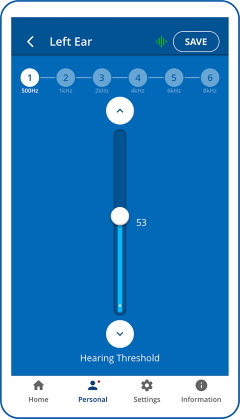
A free app, available for iPhone and Android, allows you to personalize the headset using an integrated hearing assessment. The results of the assessment are automatically applied to the headset and used as a baseline for all your hearing through the headset: live conversations, audio play (including television), mobile phone calls, and important ambient sounds like live music and sounds in nature.
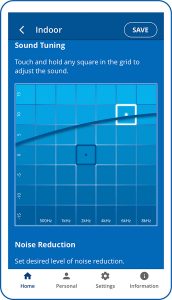
In noisy settings, use the app to set the level of background noise reduction. Also, customize what you hear in real time by selecting the Best Sound Point. Simply tap on different squares in the app’s grid until you achieve the best combination of frequency and amplitude for your current situation.
Need More Information?
Contact us here. If not, head over to our on-line store. Our 30-day return policy lets you purchase with confidence.
Active Noise Cancellation vs. Noise Reduction
What is the Difference, and Which Technology is Used in BeHear and Why?
Even before this article came out comparing the BeHear with Bose Hearphones we received inquiries about how our products enhance hearing in noisy places. There seemed to be some confusion about how two leading technologies – Active Noise Cancellation (ANC) and Noise Reduction – work in headphones in general, and whether they are used in the Wear & Hear line of assistive hearing products. Because ANC is a much-heralded feature in high-end Bluetooth headphones, many people were curious to know why we do not use it in our BeHear Bluetooth headset with personalized hearing enhancement. Our engineers have contributed the following texts in an attempt to clarify our choice.
How Does ANC Work?
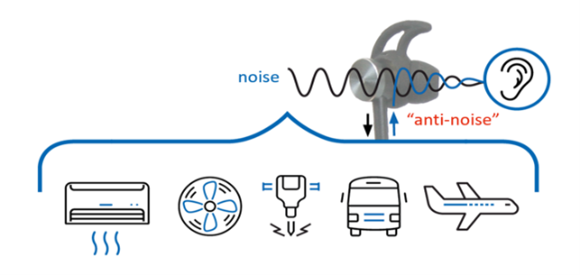
In the process of ANC a microphone is used to monitor the environmental noise in order to create an “opposite” sound wave with an inverted phase. This anti-wave is reproduced via the earpiece and mixed with the original acoustic sound wave to cancel out the noise before it reaches the user’s ear.
What Happens in the Hearing Enhancement Process?
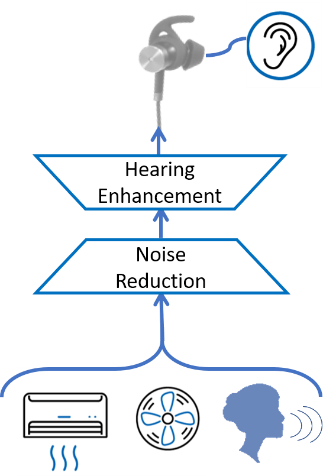
In the hearing enhancement process a microphone is also used to pick up the environmental sound. This sound is amplified based on the specific hearing requirements of the user and then the processed, slightly delayed output sound is reproduced via the earpiece.
As a result, this hearing-enhanced (amplified) sound actually masks the direct environmental sound wave causing the hearing-impaired user to hear mainly the enhanced sound reproduced by the earpiece, and not the acoustic waves coming from the environment.
Why ANC and Noise Reduction Cannot be Employed Simultaneously
The two methods – ANC and hearing enhancement – are conceptually contradictory. The conflict arises from both acoustic and methodology contradictions. Acoustically, since the same “monitoring” microphone is used by both the ANC and hearing enhancement technologies to pick up the environmental sound, the two signals – the immediate ANC anti-wave and the slightly delayed hearing-enhanced wave – may produce an unpleasant acoustic effect known in physics as “wave beats” when the two signals are mixed together in the user’s ear. Another conflict arises from the fact that one technology (ANC) tries to achieve noise reduction by sending the anti-wave, while the other (hearing enhancement) tries to substitute the direct acoustic sound with its enhanced and amplified version, making the ANC anti-wave obsolete.
For the reasons explained above, ANC is not applied in the BeHear headset. Instead, and in order to clarify the speech in noisy environments, BeHear applies a dedicated noise reduction technology to the hearing-enhanced sound, thus making the sound perceived by the user significantly less noisy. Additionally, BeHear allows the user to control the amount of noise reduction applied – a feature that is not available to users of ANC.
The Choice is Clear for Assistive Hearing Products
Bottom line:
We don’t think ANC is important for our target user given its irrelevance when combined with hearing enhancement technology. Furthermore, we didn’t want to increase the product price by introducing a feature that would increase the cost of the device without providing a substantial benefit to our users.
Alango Wear & Hear Development Team
For more information about our Wear & Hear line of assistive hearing products visit the products page of our Web site.
Alango BeHear NOW and Bose Hearphones Features Compared
Hearables Comparison Published on Hearing Tracker
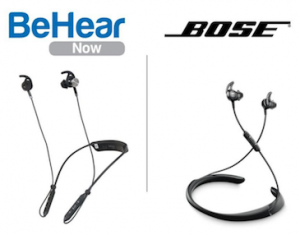
Alango’s BeHear NOW headset, launched in 2018 by Alango’s Wear & Hear (W&H) assistive products line, is the most noteworthy Bose Hearphones alternative. Both the Alango and Bose headsets aim to enhance hearing, and both support Class II Bluetooth connectivity. And because both use an in-ear neckband form factor, they are strikingly similar in appearance.
“But with BeHear NOW coming in at just $249 (versus $499 for the Bose), price is a major differentiator between the two.”
And aside from price, there are a number of key differences to consider when comparing the Bose Hearphones with Alango’s BeHear NOW. To read the entire comparative article, click here.
